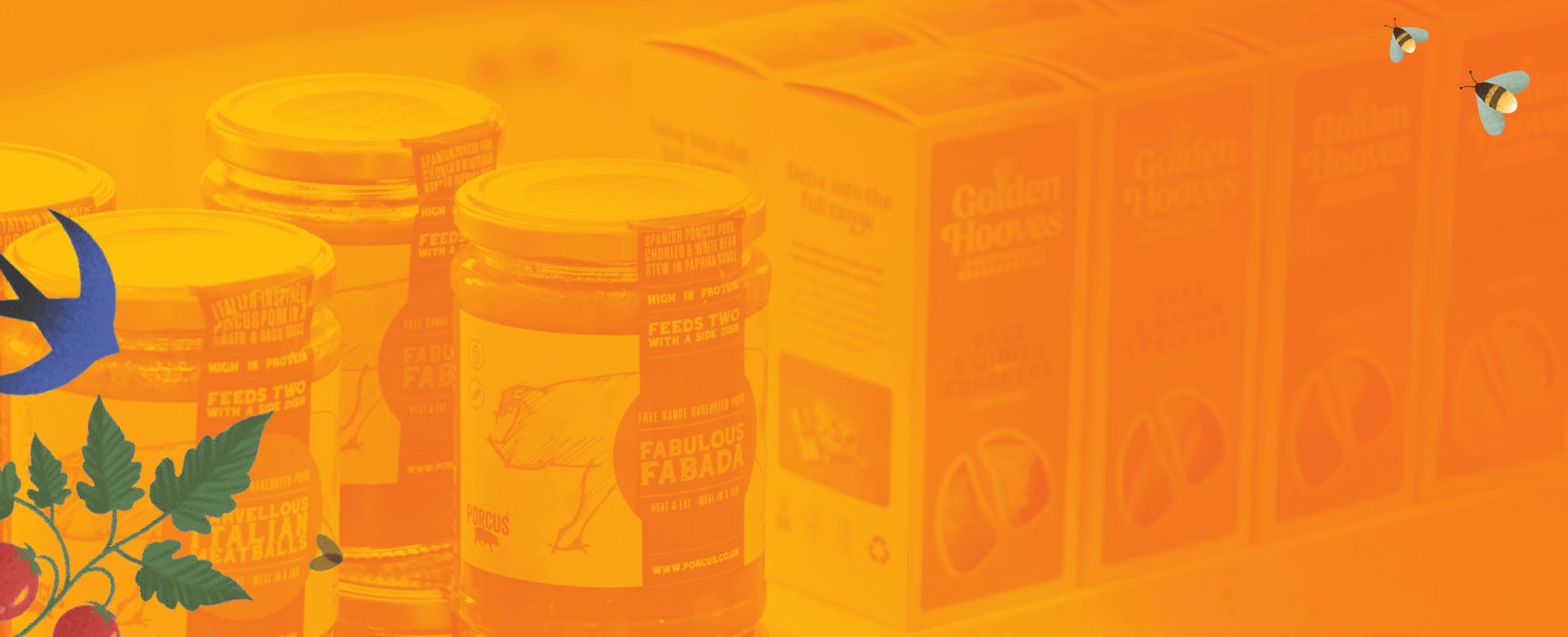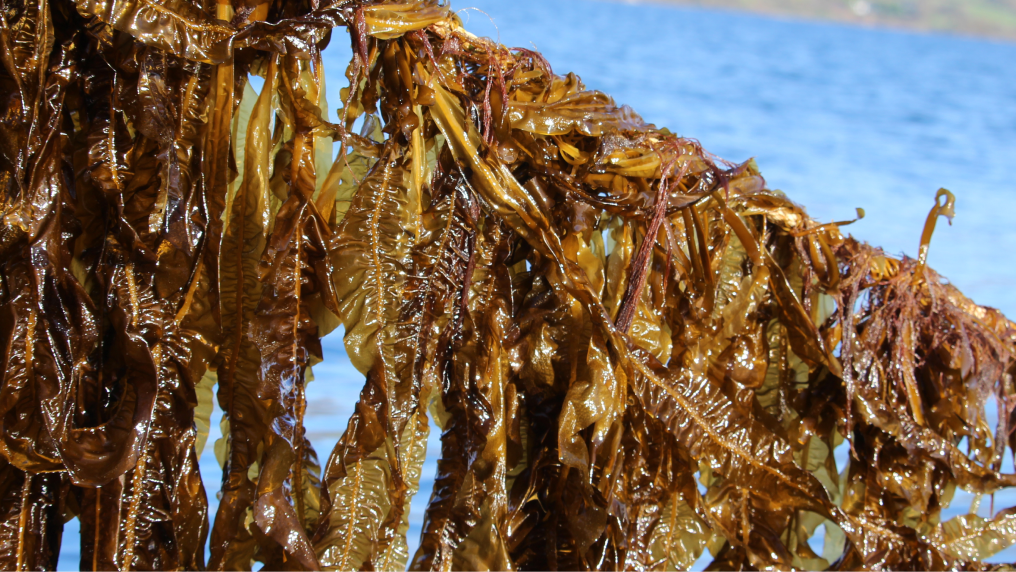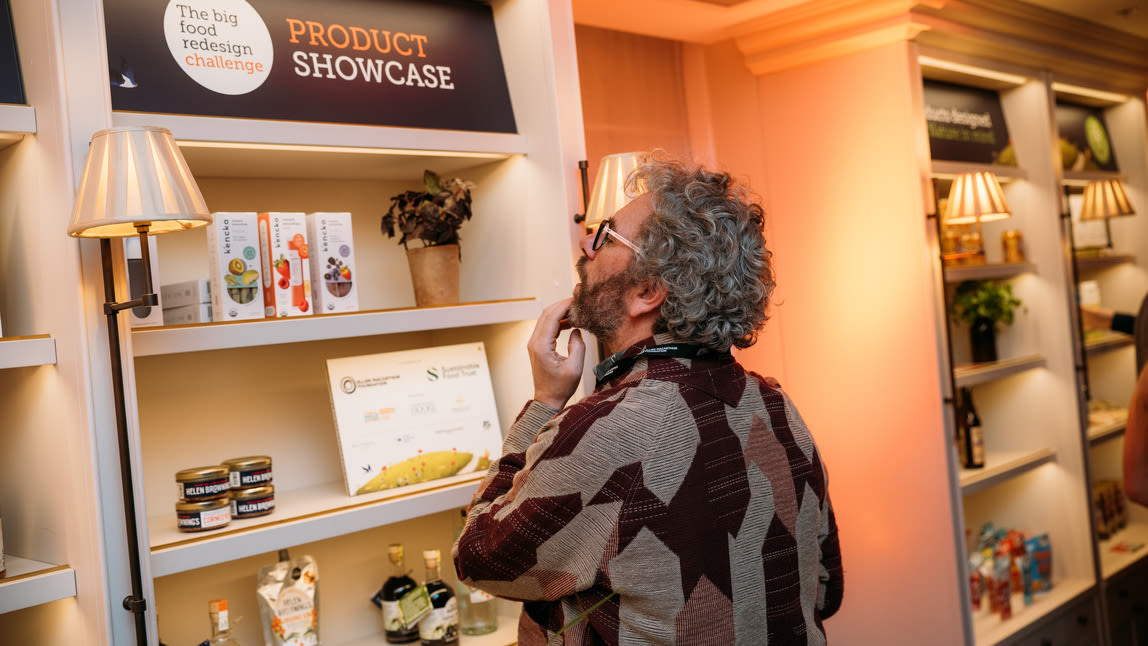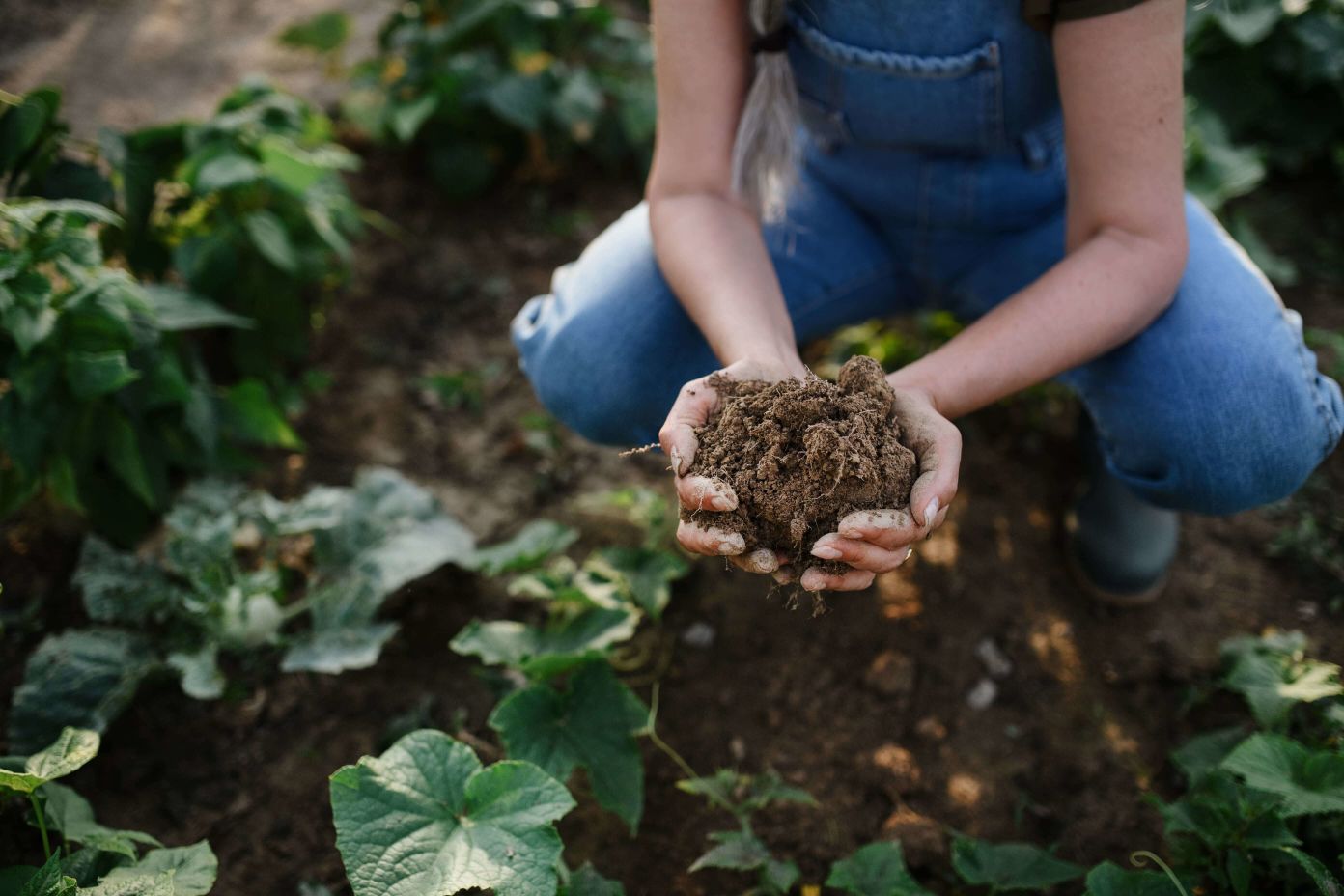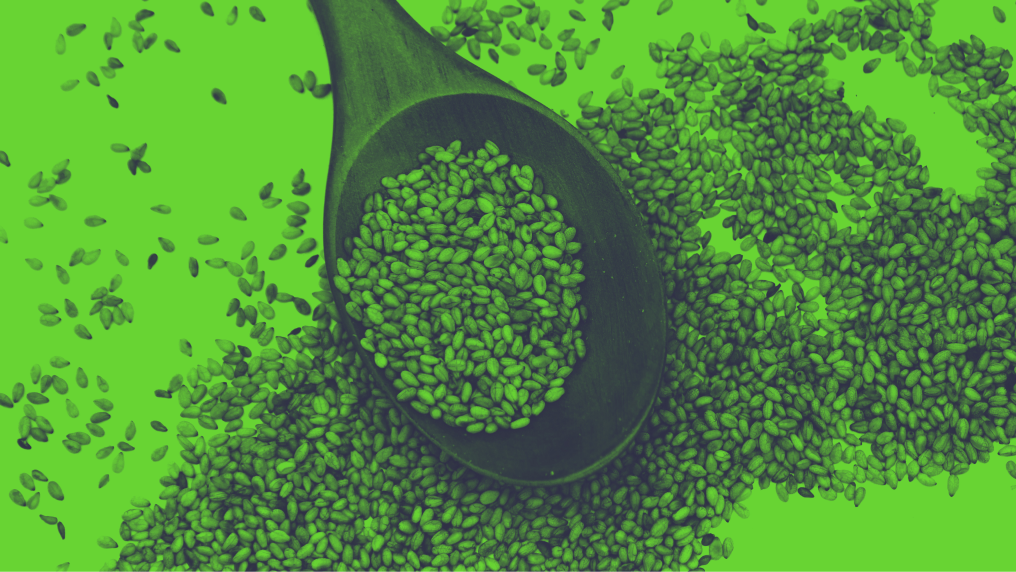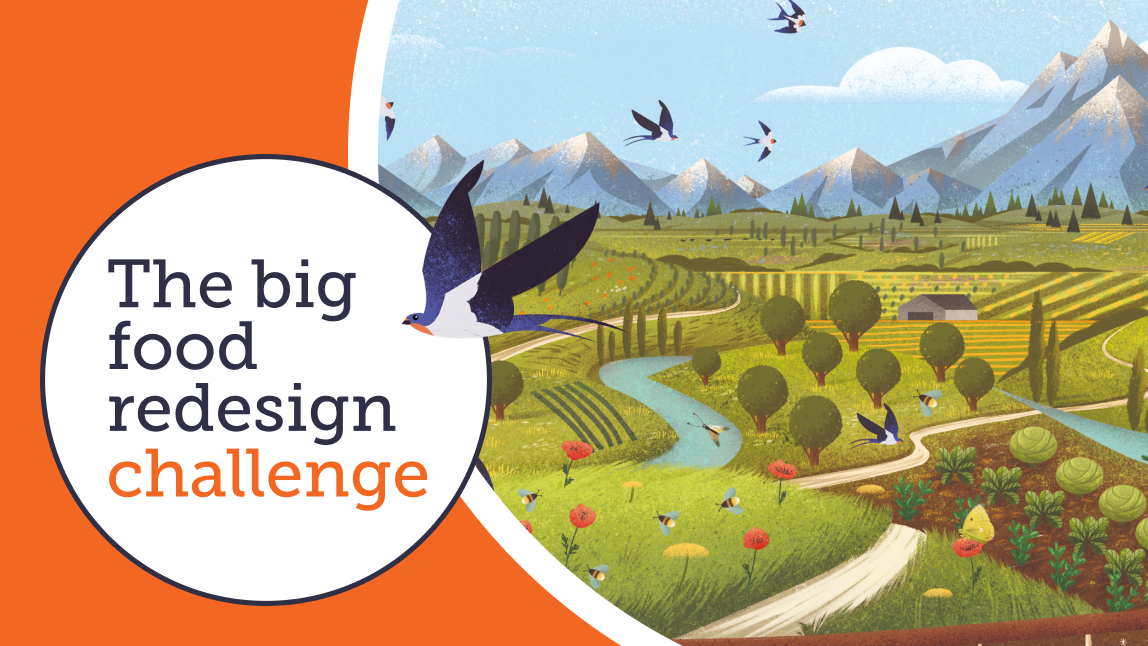By applying the Circular Design for Food Framework, companies can transform how they make food, unlocking a thriving natural world and business value in tandem. So how can your business make this happen? What practical steps do you need to take? Here, we will highlight some strategies that participants in the Big Food Redesign Challenge employed to meet the ingredient selection and sourcing criteria, opening up new possibilities for their businesses.
The top three ‘petals’ of the framework diagram represent design principles for ingredient choice (lower impact, diverse, and upcycled). These are not about changing how we farm or fish; they are about changing what we farm or fish, and what we value as ingredients. They represent opportunities for choosing ingredients that:
Are less damaging by their very nature than the usual alternatives (lower impact)
Improve diversity in our landscapes (diverse)
Make use of by-products and ingredients that would otherwise not enter the food chain (upcycled)
These three principles are all underpinned by regenerative productionregenerative productionRegenerative production provides food and materials in ways that support positive outcomes for nature, which include but are not limited to: healthy and stable soils, improved local biodiversity, improved air and water quality., represented at the bottom of the diagram. This means ingredients are produced in ways that have positive outcomes for nature, like healthy soils and greater biodiversity. Regenerative production is an umbrella term for a variety of context-specific practices farmers use to achieve these outcomes, informed by schools of thought such as agroecology, permaculture, and regenerative agriculture.
Finally, products should adopt packaging solutions that align with circular economycircular economyA systems solution framework that tackles global challenges like climate change, biodiversity loss, waste, and pollution. It is based on three principles, driven by design: eliminate waste and pollution, circulate products and materials (at their highest value), and regenerate nature. principles. This could mean designing out packaging entirely, or ensuring it stays in the economy and out of the environment by making it reusable, recyclable, or compostable — in practice and at scale.
With climate change and biodiversity loss providing an increasingly clear and present danger to the food system, this represents a way your business can create tangible value — to customers, shareholders, and the community in which you operate. But circular design is far from a defensive strategy. As the Challenge participants’ experience shows, it also offers the potential to develop higher-value elements within a brand portfolio, bringing a range of competitive advantages.

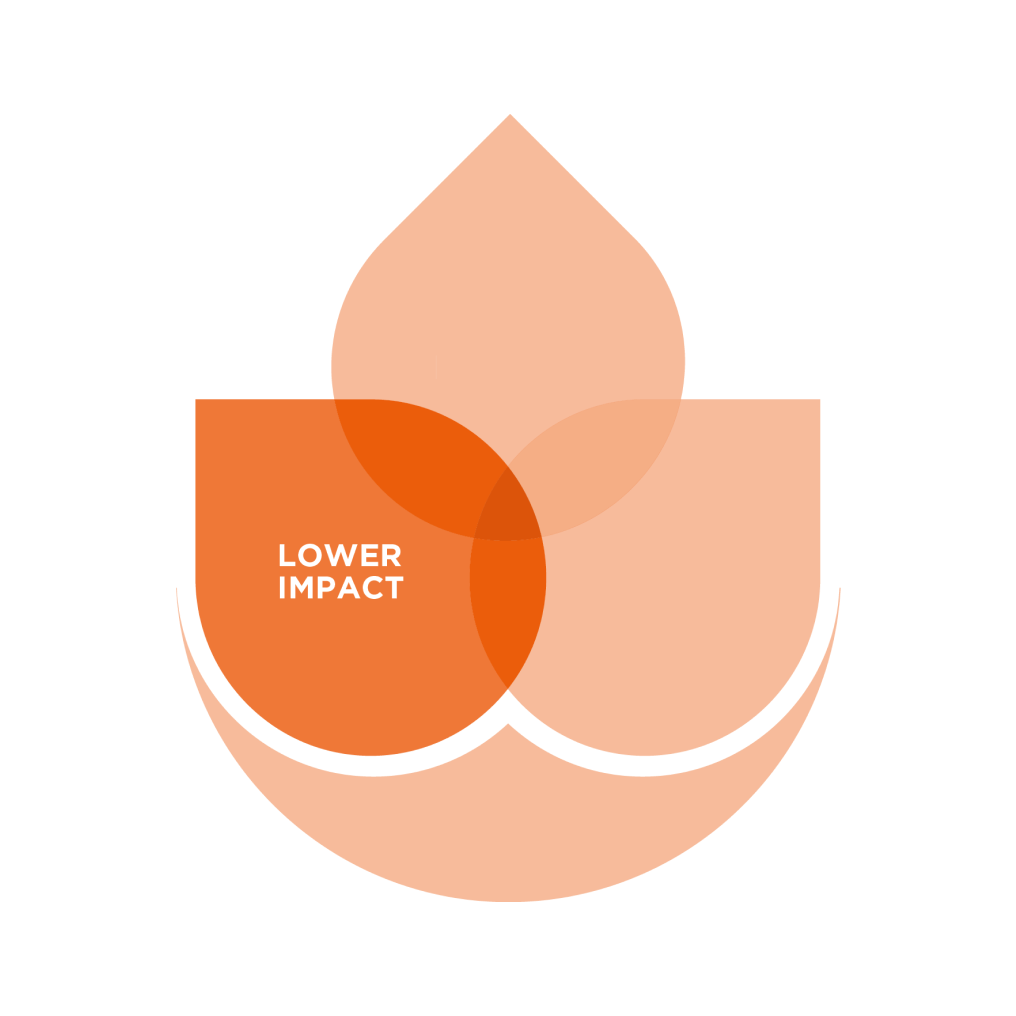
Lower impact
Although it has kept nations fed, our current food production system incurs a significant cost to nature. High-impact commodity crops (including common varieties of wheat and rice) currently dominate the ingredients used by most food manufacturers.
But food designers can instead choose ingredients that don’t degrade landscapes and seas. Lower impact ingredients are alternative choices that are inherently lower impact on nature, even when conventional methods of production are used.
Why use lower impact ingredients?
Some ingredients may simply require less water to grow, like sorghum or amaranth, or don’t need nitrogen fertiliser as they can fix nitrogen in the soil, like beans and peas. Using lower impact ingredients such as these isn’t just helpful for nature — it makes commercial sense to prioritise ingredients that require fewer input costs and are resilient to the effects of climate change, de-risking supply chains.
Lever 1: Switch-Outs
The most common way to use lower impact ingredients is to switch from one high impact common commodity, to another with lower impacts. A classic example of this is switching from meat-based to plant-based proteins. Rearing livestock and feeding them grains humans could eat is a very inefficient way to produce food. A reduction in animal protein and an increase in plants, beans, other legumes, fungi, and seaweed is needed. This lever can also be applied to plants, swapping out higher impact crops for those with lower impacts, such as switching out wheat for peas.
To increase the potential for greater positive impact, many Challenge participants went beyond a simple switch-out, by switching to less common (diverse) ingredients, or a completely different type of ingredient that might otherwise be wasted (i.e. upcycling). The greatest impacts at farm level were those that combined this with a focus on diversity and regenerative outcomes.
Examples:
Hodmedods works closely with a network of farmers, as well as supplying to other Challenge participants. Its mission is to promote UK-grown pulses and grains to boost farm diversity and soil health. The brand’s products and ingredients create markets for crops like fava beans and lentils, reducing reliance on imports and nitrogen fertilisers. It has also developed products that can offer plant-based protein alternatives, for example lentil ragu.
Stoked started out as a wife and husband duo specialising in serving up plant-based barbeque street food at events. Now it has created a range of ambient plant-based versions of popular meals. These combined lower impact design choices with improved sourcing and have achieved organic certified status through the Soil Association. Examples include ‘chilli non carne’. The Seaweed Company farms and processes its own seaweed, selling it as SeaMeat to burger producers who want to reduce meat content to minimise environmental impact.
Planting Hope has created a sesame milk as an alternative to plant-based milks that require a lot of water in their cultivation. Its Hope and Sesame milk is now on sale at major US supermarkets.
There were several granolas in the Challenge. Two companies, Nibs etc. and Wildway, reformulated and included lower impact switches away from beet sugar to maple syrup or coconut sugar. Konbit is replacing nearly all the usual granola ingredients in its Charoupomuesli, opting for low-impact, diverse ingredients such as upcycled carob flour (a by-product of making carob syrup), millet, sorghum, fava beans, sesame, and hazelnuts.
Lever 2: Less but better
The focus here is on incorporating less of a major commodity within a product, in order to reduce its environmental impact. This should be accompanied by an approach of improved sourcing of that commodity, to ensure the commodity is supporting improved outcomes for nature. This is a less-trodden pathway but nevertheless offers benefits, both for nature impact and costs.
Examples:
Uproar Food makes products including sausages and burgers for children, with a 50:50 mix of beef and vegetables. By swapping out half the meat in the burgers for organic vegetables, Uproar was able to achieve a 17% improvement on impact metrics, when compared to an average burger.
First Milk produces cheese under the Golden Hooves brand. It pays a premium to the 700 farmers that supply its milk for farming regeneratively, and incentivises the production of quality over yield, meaning that it can use less milk to make its cheeses. This approach means farmers can operate in ways that nourish soil health and biodiversity, while reducing carbon emissions.

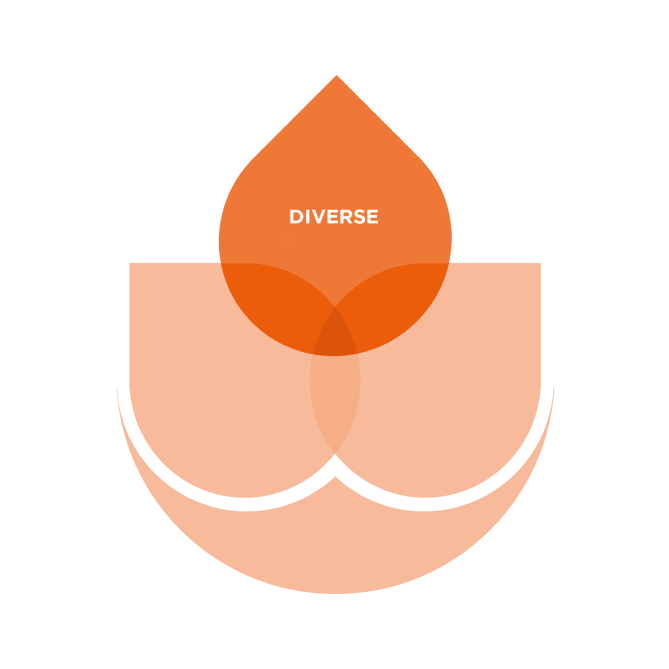
Diverse
This refers to ingredients that come from a wide range of plant and animal species, as well as varieties within those species. Currently, the opposite is true. Our landscapes, food shelves and diets are concentrated around just four commodities – wheat, rice, corn and potatoes. Creating markets for a broader range of ingredients represents a significant innovation opportunity for product developers, as well as a way to de-risk supply chains.
Why use diverse ingredients?
Genetically uniform ecosystems and populations are extremely rare in nature; they lack the resilience to survive. Greater cultivated biodiversity not only supports biodiversity more broadly, but also reduces our reliance on single varieties, increasing our resilience to pests, diseases and climate shocks.
This lack of diversity in our food is a ticking time bomb for businesses. Back in the 1950’s, banana growers discovered this the hard way when the single dominant banana variety, Gros Michel, became afflicted with Panama disease, wiping out the entire crop. Planting vast areas with the same variety of fruit was one of the main causes of its extinction. History now appears to be repeating itself as the now-dominant Cavendish variety is showing signs of not coping well with climate change. So building biodiversity by creating a market for underutilised plants, animals, fungus and other species, is critical. Investing in this now can help prevent significant yield losses and supply chain disruption in the future.
Lever 3: Underused breeds and genetics
Due to the trend towards standardisation, there are many underused breeds and varieties of plants and animals, and no shortage of opportunities to support them. Take the potato – despite the existence of 4,500 varieties globally, just a very narrow proportion of these are used commercially. There are also underused breeds of livestock – like the low-maintenance Belted Galloway cows that can be grazed in ways that conserve biodiversity. The use of diverse breeds and varieties splits into two broad categories:
One local breed/variety. Most products used this approach. The ingredients came from farms and other primary production systems that have a particular local breed or a variety genetically unique to the region. This was often referenced as giving a distinctive taste and regional selling point to products, as well as offering better biological resilience.
A blend formed of multiple varieties/breeds. There were a few products that sourced a mix of different varieties or breeds, either from different places, or from a mixed population in the same locality.
Examples:
Bí Urban have been working to make crisps to create a market for a potato variety called Sarpo Axona. This variety is blight, virus, and drought resistant, a weed suppressant, and has inbuilt dormancy. This removes the need for cold storage or artificial chemical inputs, in stark contrast to most potatoes which require a high use of pesticides.
Hijos de Rivera is a beer maker that is going the extra mile to bring greater diversity to the yeast it uses, moving away from the industry norm of using a single type of yeast. It has teamed up with a university local to its Spanish base to search for wild varieties in a nearby national park. They are also working to return diverse breeds of hops to the region.
Grupo Nutresa’s Cordillera chocolate has invested in developing the native genetic diversity of Theobroma cacao which makes its native Colombian ecosystem more resilient because the plant is better adapted to local conditions.
Wildfarmed trades under the slogan ‘Transforming lunches and landscapes’. It champions the use of diverse wheat (and now oat) genetics, moving away from genetic and species monocultures. It works closely with farmers to help them grow competitive varieties of wheat that can thrive in low-input biodiverse systems. The flour used in the Challenge product is a blend of around 16 wheat varieties.
Porcus uses rare breeds of pigs native to the UK and suited to outdoor living to make its ‘meal in a jar’ products.
Lever 4: Underused species
This refers to using a species that is underused and is directly produced as part of a diverse production system e.g. polyculture/diverse rotation, in order to support resilience and a regenerative transition. The most powerful ways of using diversity in the Challenge involved participants choosing ingredients based on the needs of the ecosystem they are produced in (e.g. a plant cover or break crop that diversifies a rotation to best support regenerative outcomes). They understood the power farms had to improve the diversity of the land, if they had a market for underused species. It is not surprising therefore that the participants that used diverse ingredients — or their ingredient suppliers — nearly always developed a close, collaborative relationship with farmers and producers.
The diversity opportunity falls into four broad categories:
Perennial crops, including agroforestry: These crops live for multiple years, reducing the need for annual tilling and planting, which disrupts soil structure. They could be grown in an orchard, vineyard or forest system, or livestock and crops could be integrated with trees and shrubs. Examples include perennial grains and legumes (eg carob), fruit and nut trees, and shrubs.
Companion crops: Evidence supports the benefit of growing diverse plant mixes to support soil health and reduce chemical inputs. This could be through the incorporation of bicrops, such as growing peas and wheat together, or a blend, such as meadow blend of different grain species.
Break crops: These are crops that farmers can plant to reduce a weed or pest build-up and support healthier soils. However, a lack of a market outlet means they may be grown without sufficient options to generate direct revenue from the crop. Examples include legumes, which fix nitrogen, reducing the need for synthetic fertilisers, and fast-growing, ground-covering plants, such as sesame and hemp.
Underused animals/seafood: This includes the use of insects as a lower-impact meat alternative, the use of species such as bison, that can support conservation initiatives (see also Lever 5 for more on this), and the use of a greater range of seafoods. It also includes the use of common livestock species, but managed as part of some of the integrated systems above, for example, integrated with trees or arable rotations.
Examples:
Carob is a perennial leguminous tree that has long been a traditional crop in the Mediterranean basin, but cultivation has declined in recent years. Growing more of these trees makes sense, however, given they are well placed to cope with unpredictable weather, Konbit has worked with an estate in Crete to grow carob and use the syrup as a replacement for sweetened chocolate in their spread. Currently, most other sweeteners (sugar beet, corn, and sugar cane) are harvested annually and associated with high environmental impacts. Hemp grows well with few inputs, and grows tall and broad, smothering weeds. It is therefore a potentially useful break crop, though underexplored currently. One Challenge participant, Prohempotic, started out by exploring the benefits of hemp in a farm rotation. A close relationship with a farmer in Wales (the company’s location) led to the realisation that a market outlet is needed to support the wider adoption of this agriculturally-useful crop. The company has developed a hemp cracker that also makes use of other diverse ingredients, including red beet and buckwheat. Fonio is a staple grain cultivated across West Africa that can grow in poor soils and requires no irrigation. It is used within the grain mixes and chips produced by US brand Yolele, started by a Senegalese chef who wants to support small-holders in his native country. His products are now widely stocked across the U.S.
Lever 5: Safeguarding a natural eco-system through careful, diverse ingredient use
This refers to the use of an ingredient that comes from a biodiverse natural ecosystem and that in doing so, helps prevent its deforestation or habitat change. It includes creating a standing forest economy (where trees have more economic value standing than being cut down), rewilding where grazing animals are reared both for conservation and meat production, and diversification of fisheries/coastal waters in order to better protect these natural/semi-natural ecosystems.
Many biodiverse ecosystems have had a very long history of being lightly managed or foraged by indigenous people in such a way that their biodiversity has thrived. However, these ecosystems are now under threat from the economic incentive for land-use change. Providing a market for their goods, within the limits of what the biodiverse ecosystem can support, can help create an economic incentive to preserve the biodiverse forests or grasslands.
Examples:
Horta da Terra uses a specialist freeze-drying technique to turn extracts of 15 plants indigenous to the Amazon forest into health ‘shots’. Plants are cultivated in a diversified agroforestry system that mimics the microclimate of the Amazon, meaning no artificial chemical inputs are needed, and the maintenance of the plants and trees are given economic viability.
In Montana in the USA, the indigenous Blackfeet Nation has created the "iinii Initiative" to return bison to its native lands, revitalising its ecosystem, culture, and community. Challenge participant Konbit has helped to create products that generate a market for the bison meat, which is carefully and sustainably harvested. As much as possible from the bison carcass is used across their portfolio of jerky, soup and burger patties. Traditional plants that are cultivated by the Blackfeet people are also used, such as chokeberries, peppermint and bitterroot.
Lever 6: Temporal diversity
This means altering a product or portfolio to showcase seasonal diversity and be able to respond to natural fluctuations in ingredient availability, as well as making the most of seasonal flavours. Today the food system is geared to demand the same products and ingredients on shelves year round. The food system is bending natural processes to deliver uniformity. A better way is for products that support ingredients to be grown in the right locations, at the right time of year, and in ways that facilitate regenerative outcomes. This enables farmers to make the most of what is grown and the changing flavours of their produce as the weather changes throughout seasons.
Examples:
Natoora’s focus on sustainability, taste and direct relationships with farmers means that it works to adapt with harvests and the seasons. Its Muhammara dip switches from fresh red peppers in the summer to dried choricero peppers in the winter. This year, this switch had to happen sooner due to a shorter summer season. These kinds of seasonal changes in ingredients within a product are not something retailers are used to working with, but Natoora has been making great progress in highlighting the importance of this seasonal design.
Aguita Divina creates fruit seltzers with flavours, including prickly pear and dragon fruit, that change according to the season.

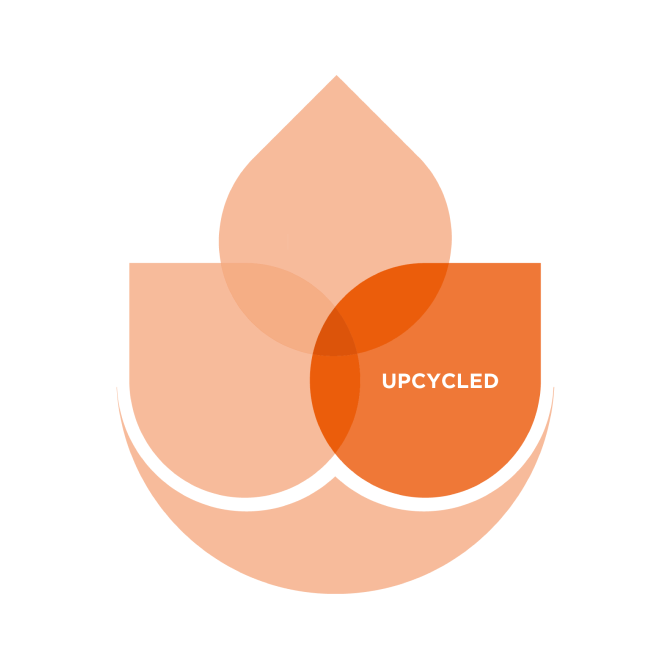
Upcycled
Reuse is one of the most valuable ways of managing materials in a circular economy, and upcycling is how this process is applied to food. Upcycled ingredients come from food by-products that otherwise would not have gone to human consumption. They are procured and produced using verifiable supply chains.
Upcycling is enabled by entrepreneurial collaborations, as well as innovations in processing technology and supply chain management that transform what was once considered ‘waste’ into ingredients to make new food products with.
For food designers looking for novel ways to create consumer interest, this can be a fast-track to finding new ways to enliven products, while also hitting ESG goals by substituting conventional ingredients. Peel, seed pods, and pulp that might have been left to rot in fields are seeing new life by food upcyclers, while unusual cuts of meat are also finding new uses.
Why use upcycled ingredients?
Curbing food loss and waste is a key target for reducing global greenhouse gas (GHG) emissions as one-third of GHGs are caused by it.
Food brands can contribute to this emissions-reduction mission by ‘upcycling’ food by-products that would otherwise not have been eaten by humans. This reduces emissions by making better use of the energy and resources (including land) already used in the creation of crops and livestock.
Upcycled ingredients can also contribute to meeting the world’s growing nutritional needs and reducing the conversion of more ecosystems into agricultural land.
Lever 7: Farm level upcycling
Upcycling at this stage is about maximising what is produced by farmers and fishers. This optimises their income, as well as minimising waste at field and sea level.
There are three forms:
Low value harvest: Using an ingredient made from a farm’s surplus/glut or low value harvest that might have otherwise gone to landfill/biofuel/animal feed/pet food. This provides more value to a farmer to invest in their regenerative transition. Many arable crops need to be harvested within a short window and meet certain cosmetic standards. In the context of an increasingly volatile and warming climate, this is becoming more difficult and harvest losses are likely to accelerate. Sourcing and processing these ingredients can support farmers retain a human-grade price for the crops.
Farm by-products: Using an ingredient made from by-products created on a farm that might have otherwise gone to landfill/biofuel/animal feed. This provides more value to a farmer to invest in their regenerative transition.
Carcass balance: Using part of an animal that might otherwise have gone to landfill/biofuel/pet food.
Examples: Hodmedods has identified that peas missing a 48-hour harvest window are normally lost from human consumption, and are typically ploughed in (rather than going to animal feed) given the high harvest costs. The company has developed a range of products that incorporate ‘wrinkled peas’ — providing a sufficient incentive to farmers to harvest the crop rather than lose it.
GoodSam uses the often-discarded pulp juice from cocoa to flavour its chocolate. The company sources from farmers aware of the benefits to nature and their crops of growing coffee plants and cacao trees within agroforestry systems in biodiverse areas of Colombia.
Helen Browning's is turning the beef from pasture-raised dairy cows after they’ve retired to rest and graze into corned beef. The meat of former dairy cows is often diverted into pet food, but this route means meat can be retained for human consumption and kept at a higher value.
The Wild Hare sources regeneratively produced beef and partners with Uproar Foods to share the carcasses to minimise wastage.
Lever 8: Upcycling residual products from food manufacturing
This refers to the use of an ingredient derived from by-products created by a manufacturer or ingredient processor. These by-products might have otherwise gone to landfill, biofuel, or animal feed, but are put to a higher value use by keeping them within the human food chain. Spent grain from the brewing process is one of the ingredients currently generating interest in this category.
Examples: Nude’s Cereal Proteico incorporates an oatmeal paste that is a by-product from the production of its oat milk.
Biasol creates two products (a pancake mix and a granola) by repurposing spent grain from local breweries. The pancake mix also incorporates whey, a by-product from cheese-making, while the granola base is made from organic oats from a farm local to its Irish factory.
Lever 9: Retail waste
This involves using an ingredient derived from retail waste, that might have otherwise gone to landfill or biofuel. Although focusing on the avoidance of waste at this stage is the best option, difficulties planning stock currently means that waste occurs, typically short shelf-life products. A few Challenge participants have designed products to address this.
Examples: Rescued is creating baking mixes developed from unsold bread from New Zealand supermarket chain Woolworths.
Toast uses the ‘heel’ ends of bread loaves in its beer brewing process.
Lever 10: Household consumption
There are many initiatives aimed at tackling the significant issue of household waste and, although the Challenge's definition of upcycling didn't focus on the household, we learnt that circular design strategies can also offer some value on this issue, including through extending ingredients’ shelf lives.
Examples:
Fruit and vegetables are common forms of household waste. Kencko, realising that many of these are purchased with the intention of making smoothies, designed a freeze-dried smoothie product using organic ingredients.
Porcus People is innovating with its ‘meal in a jar’ products made from pork from regeneratively-farmed native breed pigs. This can help reduce household waste because of its long ambient shelf life, while also containing diverse ingredients from a regenerative system. The company uses glass packaging technology common in Europe (but less so in its UK base) that provides a convenient ready meal product.
Challenge participants are pushing at food industry norms as they explore ways to make circular design for food physically possible and commercially viable. Read on to find out what kept their founders up at night and how they’ve been able to negotiate the challenges.
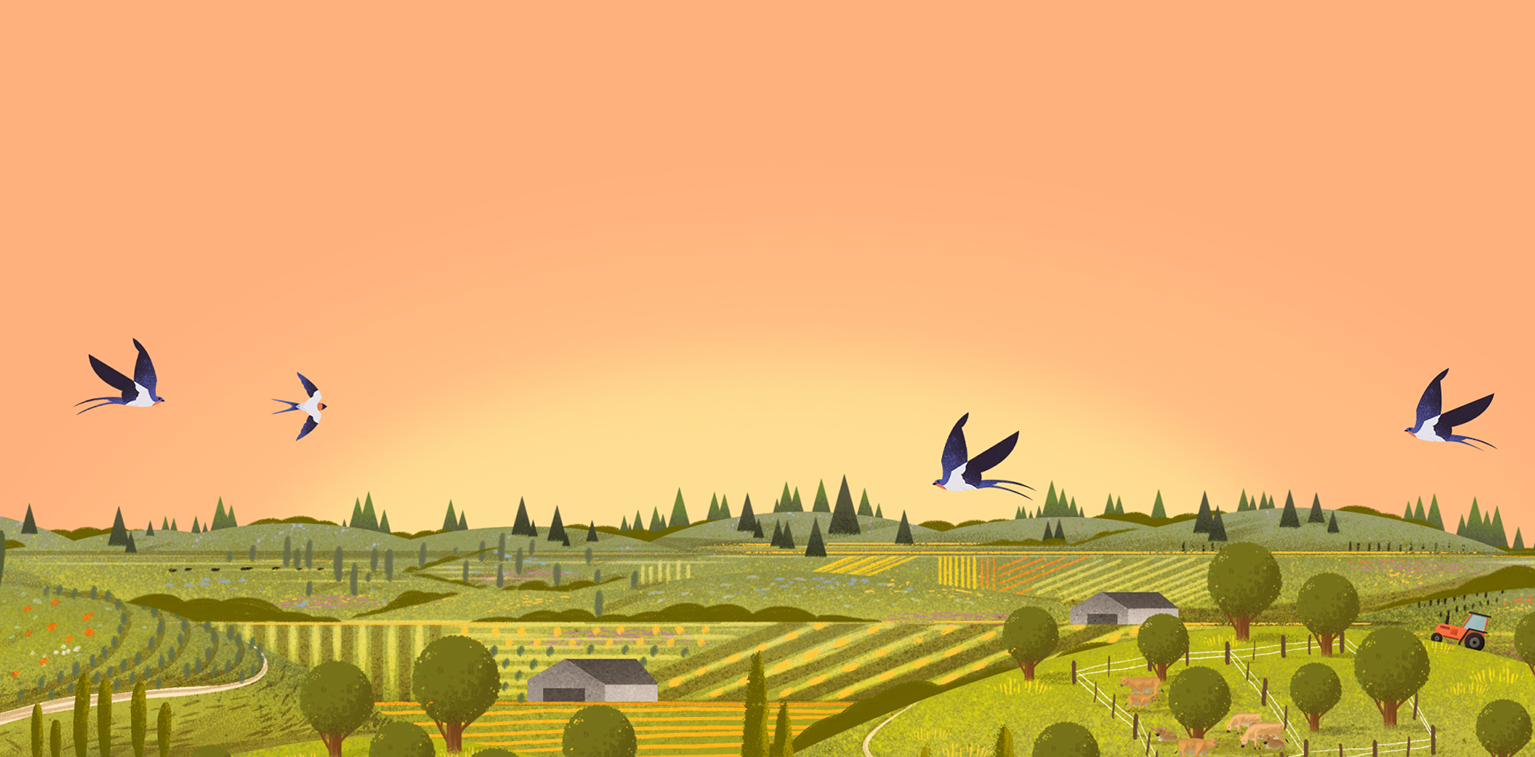
How to make circular design for food work in your business
The following pages provide practical advice for successfully implementing circular design principles into your food business, illustrated through the experiences of our 57 Challenge participants.
